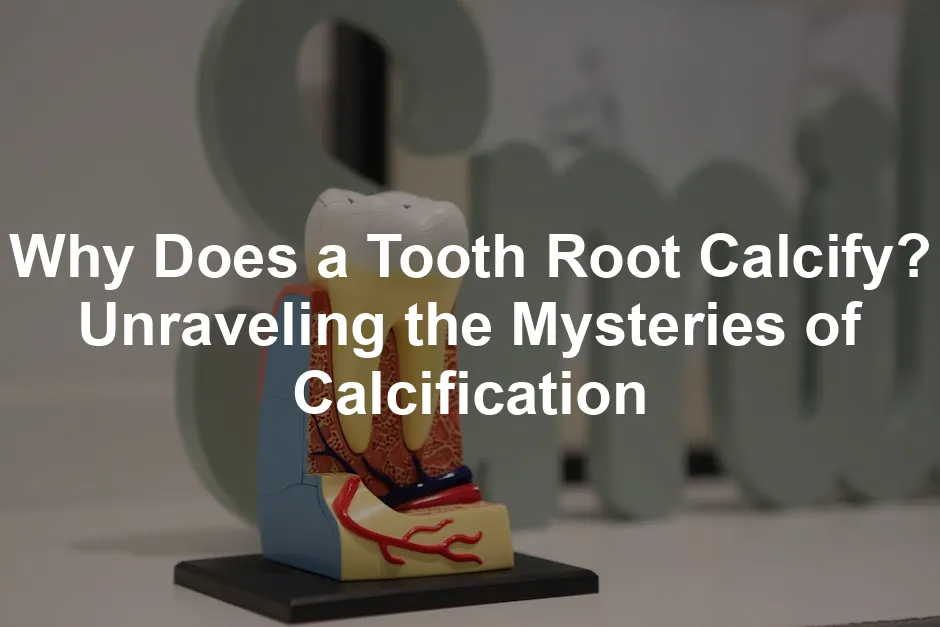
Why Does a Tooth Root Calcify? Unraveling the Mysteries of Calcification
Introduction
In the intricate world of dental health, tooth root calcification often lurks in the shadows, a silent adversary to your pearly whites. But what exactly does it mean when we say a tooth root has calcified? This condition, which may sound alarming, is more common than you might think, and understanding it is crucial for maintaining a healthy smile.
Tooth root calcification involves the buildup of calcium deposits within the root canal. This can lead to a narrowing of the canal space, complicating dental procedures like root canals. The process is often gradual and can occur for various reasons. Aging is a natural contributor, as the body’s processes change over time. But other factors, like trauma or untreated decay, can accelerate the process.
Imagine a tooth as a sturdy tree, with its roots hidden beneath the surface. Over time, just like a tree that’s been through storms, those roots can become encased in layers of protective bark, or in this case, calcium. This protective layer, while beneficial in some ways, can make it harder for dentists to reach the living tissues inside the tooth.
But fear not! While tooth root calcification might sound scary, it’s manageable with modern techniques. Dentists are equipped with high-tech tools that make diagnosing and treating calcified roots easier than ever. State-of-the-art imaging technology helps visualize the extent of calcification, while specialized instruments allow for precise treatment.
In this blog post, we’ll explore the fascinating process of tooth root calcification, its causes, implications for dental health, and the innovative treatments available to manage it. Get ready for a captivating look beneath the surface of your teeth!
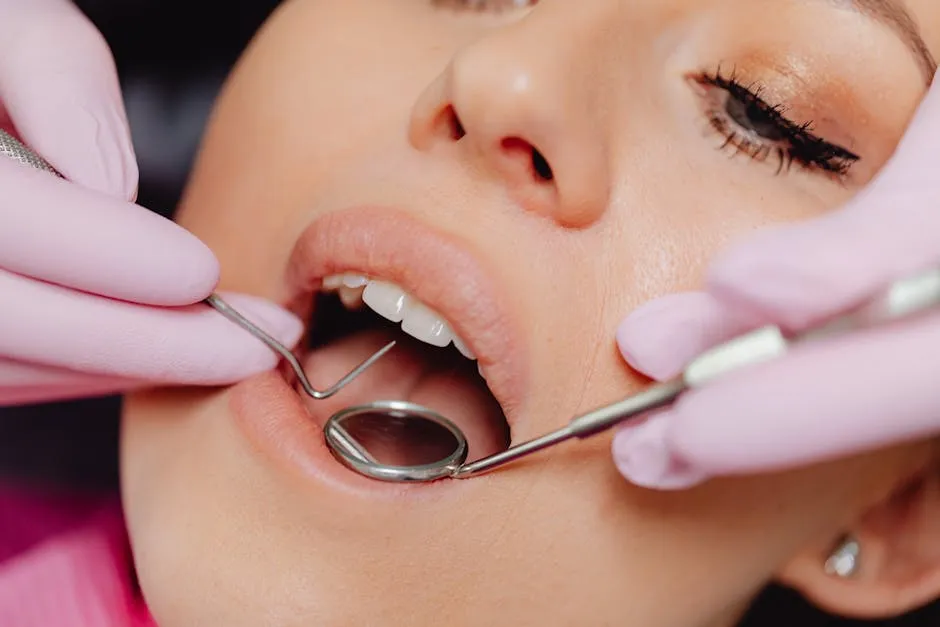
Summary of Key Points
Tooth root calcification refers to the buildup of calcium deposits within the root canal, leading to narrowing and potential complications in dental procedures. This phenomenon can stem from various factors including aging, trauma, and chronic dental conditions. As teeth age, they naturally undergo changes that may lead to calcification, while injuries or untreated decay can accelerate the process. The presence of calcified roots complicates treatments such as root canals, often requiring specialized techniques and advanced technology for successful intervention.
Understanding the mechanisms behind calcification can empower patients to seek timely dental care and explore preventive measures. This article will cover the anatomy of teeth related to calcification, its causes, symptoms, treatment options, and the role of modern dental technology in addressing these challenges.
Being informed about tooth root calcification can help you maintain your dental health. Remember, a healthy smile is the best accessory!

The Anatomy of Tooth Roots
Understanding Tooth Structure
Teeth are marvels of biology. Each tooth has a crown, root, and pulp. The crown is the visible part, shining brightly when you smile. The root, however, is the hidden hero. It anchors the tooth into the jawbone.
But what lies beneath? The pulp! This soft tissue is the tooth’s lifeline. It contains nerves and blood vessels, delivering nutrients and sensation. The root canal system is crucial for dental health. It allows for communication between the pulp and the rest of the body.
When calcification occurs, the root canal can narrow, causing issues. This is where the trouble begins. Calcification can make it hard for dentists to access the pulp. Think of a clogged drain; things can quickly get messy!
The dental pulp plays a vital role in tooth health. When it calcifies, the implications can be serious. The pulp can shrink due to calcium deposits, leading to reduced blood flow. This can result in pain or even tooth death, making understanding calcification essential.
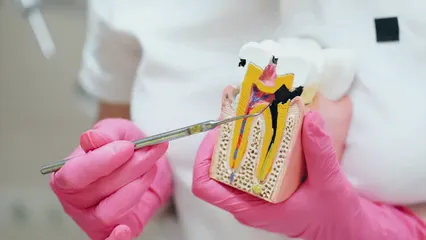
What is Calcification?
Tooth root calcification refers to the buildup of calcium deposits within the root canal. Unlike the normal aging process, which may gradually affect the teeth, calcification is more abrupt. It may occur due to trauma, decay, or other factors.
While aging naturally thins the pulp, calcification causes it to narrow or even close off entirely. It’s like a traffic jam in your tooth! This can complicate treatment options, making timely intervention key. Recognizing the difference is crucial for maintaining dental health and planning future treatments.

Causes of Tooth Root Calcification
Natural Aging Process
As we age, our teeth undergo changes. The pulp chamber decreases in size, often leading to calcification. This process can be frustrating, especially for older adults. They may notice increased dental sensitivity or discomfort.
Common signs of calcification in older adults include discoloration or pain. These symptoms indicate that something might be amiss. Regular dental check-ups can help catch these changes early, allowing for better management and treatment.
Understanding how aging affects your dental health is important. For more information, check out this article on why does sun exposure lead to premature aging and how to protect your skin.

Trauma and Injury
Dental trauma can lead to unexpected outcomes. A sports injury, fall, or any impact can trigger calcification. When a tooth experiences trauma, it often responds by forming extra calcium deposits.
For example, a case study of a young athlete showed that after a fall, the tooth began to calcify. The trauma prompted the tooth to create layers of protection. This response can help shield the pulp from infection, but it makes treatment challenging.
Protect your smile with a reliable sports mouthguard. It’s a small investment that can save you from big dental bills down the line!

Dental Decay and Infection
Untreated cavities can wreak havoc on dental health. When decay goes unchecked, it can lead to pulp damage. This damage often results in calcification as the tooth tries to protect itself.
Chronic infections are another culprit. They can cause the pulp to react defensively, leading to a buildup of calcium. This cycle can make it challenging to treat the tooth effectively. Addressing decay early is crucial in preventing these complications. Regular dental visits can help keep your smile bright and healthy!
Don’t forget to use whitening toothpaste to keep those pearly whites shining bright and healthy. After all, who doesn’t want a dazzling smile?
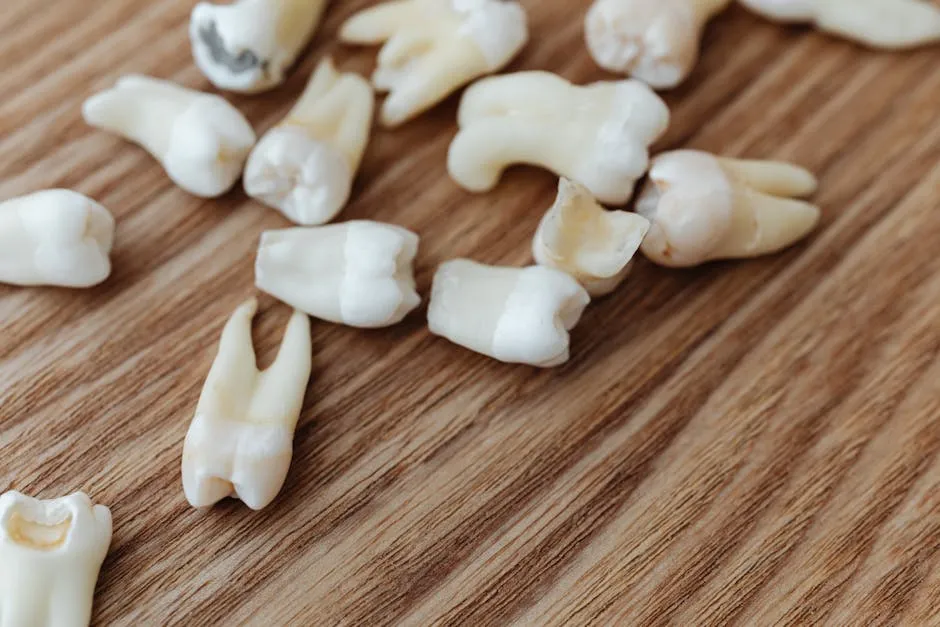
Symptoms and Diagnosis
Recognizing Symptoms
When tooth roots start to calcify, they can send out warning signals. Understanding these symptoms is crucial for timely intervention. One common sign is pain, which can range from mild discomfort to sharp, throbbing sensations. This pain often arises when the tooth is exposed to hot or cold stimuli, indicating heightened sensitivity.
Discoloration is another telltale sign. Have you noticed a tooth that looks a bit darker than its neighbors? This could signal calcification. The buildup of calcium can interfere with the tooth’s normal vitality, leading to changes in color.
Lastly, sensitivity is a red flag. If your tooth suddenly reacts to sweet treats or cold drinks, it might be time to visit your dentist. Regular dental check-ups are essential. They can help detect signs of calcification before they escalate into major issues. Don’t wait for the pain to become unbearable; prevention is better than cure!

Diagnostic Techniques
How do dentists figure out if your tooth roots are calcified? Advanced imaging techniques are the answer! X-rays are the first line of defense. They provide a basic view of the tooth structure, helping identify any abnormalities.
However, for more complex cases, Cone Beam Computed Tomography (CBCT) is a game changer. This nifty technology offers three-dimensional images, allowing dentists to visualize the entire tooth and its roots in detail. It’s like switching from a black-and-white movie to a full-color blockbuster!
With these imaging techniques, dentists can pinpoint areas of calcification and plan the best course of action. The combination of traditional X-rays and advanced imaging ensures accurate diagnosis, leading to effective treatment. Remember, catching issues early can save your tooth—and your smile!

Advanced Techniques and Technologies
Use of Dental Microscopes and Ultrasonic Tools
In the realm of treating calcified root canals, precision is key. Dental microscopes are a game changer, enabling dentists to see minute details within the tooth. It’s like switching from a potato-quality camera to high-definition! This clarity helps in locating canal orifices that might otherwise remain hidden.
Ultrasonic tools complement this technology beautifully. They employ high-frequency vibrations to break down calcium deposits, making cleaning the canals less of a Herculean task. Think of it as a mini power wash for your teeth! These advanced techniques enhance treatment outcomes and reduce the risk of complications during procedures.
Speaking of dental hygiene, don’t forget to keep your mouth fresh with an antibacterial mouthwash. It’s the cherry on top of your oral care routine!

Role of Cone-Beam Computed Tomography (CBCT) in Treatment
Cone-Beam Computed Tomography (CBCT) has revolutionized how dentists approach root canal therapy. Unlike traditional X-rays, which provide a flat image, CBCT creates a three-dimensional view of the tooth’s internal structure. This is particularly helpful for identifying calcified canals, which can be tricky to navigate.
Using CBCT, dentists can plan their approach before even picking up a tool. This foresight minimizes surprises and maximizes efficiency during treatment. By accurately mapping out the root canal system, CBCT allows for a more targeted and effective treatment, ensuring that even the most challenging cases have a shot at success.
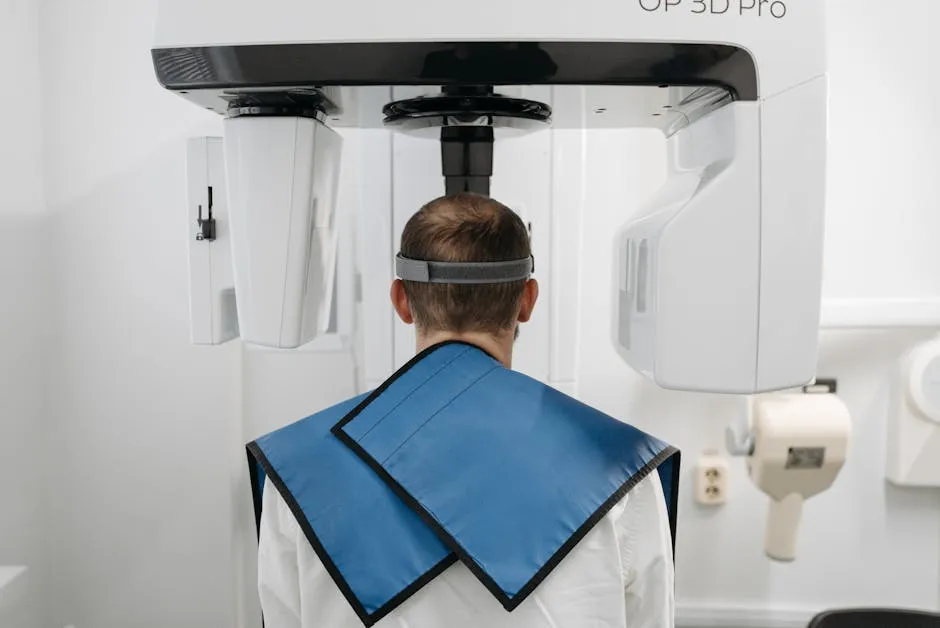
Prognosis and Success Rates
Factors Influencing Treatment Success
The success of root canal treatments, especially on calcified roots, hinges on several factors. First, the extent of calcification plays a pivotal role. More severe calcification can lead to longer treatment times and increased complexity.
Patient compliance with aftercare instructions, such as maintaining oral hygiene, also influences outcomes. Additionally, the experience of the dentist cannot be overstated. Skilled practitioners equipped with advanced technology are more likely to navigate the challenges posed by calcified canals successfully.
Speaking of aftercare, consider investing in a dental care kit to ensure you have all the tools you need for maintaining your oral health at home!

Patient Testimonials or Case Studies on Successful Treatments
Real-life stories can be incredibly encouraging. One patient, Sarah, had a calcified root canal that seemed hopeless. After her endodontist utilized dental microscopes and CBCT imaging, they successfully navigated the complex canal system. Sarah expressed immense relief and gratitude, stating she “never thought this tooth could be saved!”
Another case involved a young athlete who suffered dental trauma. Initially, his prognosis was grim due to severe calcification. However, with the use of ultrasonic tools and precise treatment planning, the dentist managed to restore his tooth effectively. These testimonials illustrate the potential for successful outcomes, even when faced with daunting challenges.

Preventive Measures
Maintaining Oral Health
Prevention is always better than cure, especially regarding dental health. Best practices for maintaining oral hygiene include brushing twice a day and flossing daily. But don’t stop there! Using an antibacterial mouthwash can add an extra layer of protection against cavities.
Regular dental visits are vital for early detection of issues like calcification. Think of it as a wellness check for your teeth. Catching problems early can save you from the discomfort of advanced treatments down the road.
To help maintain that beautiful smile, consider using dental floss daily. It’s a simple step that can make a big difference in your oral hygiene routine!
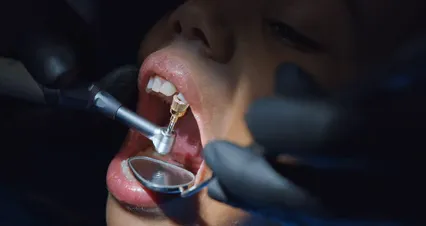
Dietary Considerations
What you eat matters just as much as how you care for your teeth! Nutritional factors play a significant role in supporting dental health. Foods rich in calcium and phosphorus, like dairy products and leafy greens, can help strengthen your teeth.
Conversely, sugary snacks and beverages can contribute to tooth decay, which may lead to calcification. So, while indulging in that sweet treat can be tempting, moderation is key. Opting for crunchy fruits and vegetables can not only satisfy your cravings but also help clean your teeth naturally.
Incorporating these dietary considerations alongside proper oral hygiene will put you on the path to healthier teeth and a lower risk of calcification. Remember, your smile deserves the best care possible!
And speaking of healthy habits, consider adding a calcium supplement to your diet to support your dental health from the inside out!

Conclusion
Tooth root calcification is a common dental condition that many people might encounter. While it can sound daunting, understanding its causes and effects is crucial for effective management. Calcification occurs primarily due to factors like aging, trauma, and untreated decay. When calcium deposits build up, they can narrow the root canal, complicating dental procedures.
Advancements in dental technology have made it easier to address calcified roots. Endodontists now have access to advanced imaging techniques, like cone-beam computed tomography (CBCT), and specialized tools that enhance treatment precision. These innovations allow dentists to not only manage calcified roots effectively but also help preserve natural teeth for longer.
Regular dental check-ups and maintaining good oral hygiene practices are vital in preventing calcification. Brushing, flossing, and visiting your dentist regularly can help keep your teeth healthy and reduce the risk of complications. Remember, your smile is your best accessory, and taking care of your teeth is the first step toward a brighter, healthier smile!
FAQs
What is tooth root calcification?
Tooth root calcification is a condition where calcium deposits accumulate in the root canal, reducing its size. This can lead to complications during dental treatments, as the affected canal becomes hard to access and clean.
How can I prevent tooth root calcification?
Preventing calcification involves maintaining excellent oral hygiene. Regular brushing, flossing, and dental visits help catch issues early. Additionally, a balanced diet rich in calcium and vitamin D supports healthy teeth.
Is calcification always a sign of trouble?
Not necessarily! While calcification can complicate treatments, it doesn’t always indicate an infection. However, if you experience pain or sensitivity, it’s essential to seek professional advice.
Can calcified roots be treated successfully?
Yes! With modern techniques and technology, many calcified root canals can be treated successfully. Endodontists are skilled in managing these cases, often achieving positive outcomes for patients.
Are there any home remedies for calcification?
Home remedies are limited when it comes to calcification. While maintaining good oral hygiene is crucial, myths about specific remedies can lead to neglecting professional treatment. Always consult your dentist for proper care.
Please let us know what you think about our content by leaving a comment down below!
Thank you for reading till here 🙂
All images from Pexels




